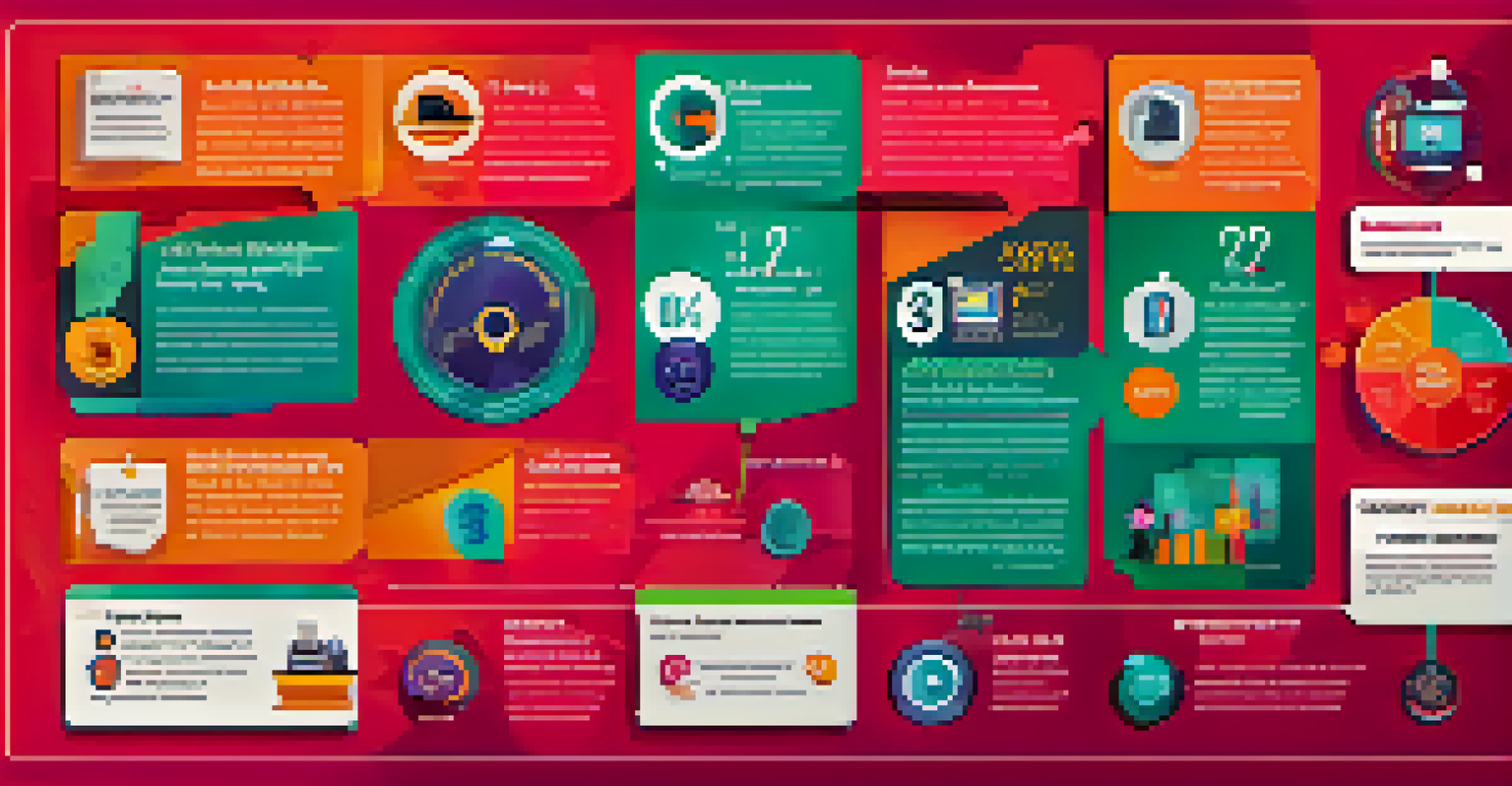Gamification in FinTech: Engaging Users in Financial Management

Understanding Gamification and Its Relevance to FinTech
Gamification involves applying game-design elements in non-game contexts to enhance user engagement. In the FinTech sector, this approach can turn mundane financial tasks into enjoyable activities, making personal finance management less daunting. By incorporating rewards, challenges, and interactive elements, FinTech companies can attract and retain users more effectively.
Games are the most elevated form of investigation.
Imagine a budgeting app that rewards you with points for every expense you track. This simple change can motivate users to engage more frequently with their financial data, turning a chore into a fun habit. Gamification helps bridge the gap between financial literacy and user experience, creating a win-win for both consumers and financial institutions.
As the FinTech landscape becomes increasingly competitive, gamification offers a unique edge. Companies that embrace this strategy can differentiate themselves, fostering a loyal user base while promoting better financial habits.
The Psychological Impact of Gamification on Users
At the heart of gamification lies an understanding of human psychology. Elements like competition, achievement, and reward systems tap into intrinsic motivators that drive user behavior. For example, leaderboards can create a sense of competition, encouraging users to improve their financial habits to climb the ranks.

Moreover, the feeling of accomplishment from completing challenges or reaching savings goals can significantly boost user satisfaction. This emotional connection not only keeps users engaged but also encourages a more proactive approach to managing their finances. When users feel good about their progress, they are more likely to continue using the app.
Gamification Enhances User Engagement
By integrating game-like elements, FinTech apps can make financial tasks enjoyable, motivating users to interact more frequently.
In essence, gamification aligns with fundamental human needs, making financial management not just a task but an engaging journey. As users interact with these gamified features, they develop a healthier relationship with their finances.
Examples of Successful Gamification in FinTech
Several FinTech companies have successfully implemented gamification to enhance user engagement. For instance, apps like Mint and Qapital incentivize users with rewards for achieving savings goals or sticking to budgets. These features not only motivate users but also provide tangible benefits, making financial management feel rewarding.
The game is afoot!
Another great example is the savings app Acorns, which rounds up users' purchases and invests the spare change. By gamifying the investment process, Acorns makes it easier for users to participate in investing, often without them even realizing it. This seamless integration of gamification elements allows users to enjoy financial growth without the intimidation often associated with investing.
These examples illustrate how gamification can be tailored to fit different financial services, creating unique experiences that resonate with users. As more companies recognize the potential of gamification, we can expect to see even more innovative solutions emerge in the FinTech space.
Building Financial Literacy Through Gamification
One of the greatest benefits of gamification in FinTech is its ability to enhance financial literacy. By incorporating educational elements within a game-like structure, users can learn about budgeting, investing, and saving in an engaging way. For instance, quizzes and interactive scenarios can provide valuable insights while keeping users entertained.
Consider a financial app that offers mini-games to teach users about interest rates or investment strategies. As users progress through the games, they not only gain knowledge but also feel a sense of achievement, making the learning process enjoyable. This creative approach can demystify complex financial concepts, empowering users to make informed decisions.
Boosting Financial Literacy Effectively
Gamification facilitates learning about financial concepts through interactive experiences, empowering users to make informed decisions.
Ultimately, improving financial literacy through gamification can lead to more responsible financial behavior. As users become more knowledgeable, they are likely to apply their learnings to real-life situations, fostering a healthier financial future.
Challenges and Considerations in Gamification
While gamification presents numerous benefits, it is not without its challenges. One major concern is striking the right balance between fun and functionality. If gamified elements overshadow the core financial services, users may become distracted or frustrated, leading to disengagement.
Another consideration is ensuring that gamification remains inclusive and accessible to all users. Not everyone responds to gamified strategies in the same way; what motivates one person might not resonate with another. Therefore, it’s essential for FinTech companies to offer a variety of gamified experiences to cater to diverse user preferences.
Lastly, privacy and security concerns must be addressed when implementing gamification features. Users need to feel safe while engaging with the app, and companies should prioritize transparency and data protection to build trust.
Future Trends in Gamification for FinTech
As technology continues to evolve, so too will the strategies employed in gamification within FinTech. Future trends may include the integration of augmented reality (AR) and virtual reality (VR), creating immersive experiences that further engage users. Imagine navigating a virtual world that teaches you about investment opportunities while you interact with animated characters.
Additionally, artificial intelligence (AI) could play a significant role in personalizing gamified experiences. By analyzing user behavior, AI can tailor challenges and rewards to individual preferences, making the experience even more engaging. This level of customization can significantly enhance user satisfaction and retention.
Future Trends in Gamification Ahead
Advancements in technology, such as AI and AR, promise to further personalize and enhance gamified experiences in FinTech.
As we look ahead, the potential for gamification in FinTech is vast. With advancements in technology and a growing emphasis on user experience, the future holds exciting possibilities for creating engaging financial management solutions.
Conclusion: Embracing Gamification in Financial Management
Gamification is not just a trend; it’s a powerful tool that can transform user engagement in financial management. By making financial tasks enjoyable and rewarding, FinTech companies can foster a new generation of financially savvy users. The key lies in understanding the psychological aspects of gamification and applying them thoughtfully within financial applications.
As we’ve explored, successful implementations can lead to increased financial literacy, improved user satisfaction, and ultimately, better financial habits. However, it’s essential to approach gamification with balance and consideration, ensuring it enhances rather than distracts from core financial services.

In a world where financial literacy is more crucial than ever, embracing gamification can pave the way for a brighter financial future. As we continue to navigate the digital landscape, let’s harness the power of gamification to create engaging and effective financial management tools.